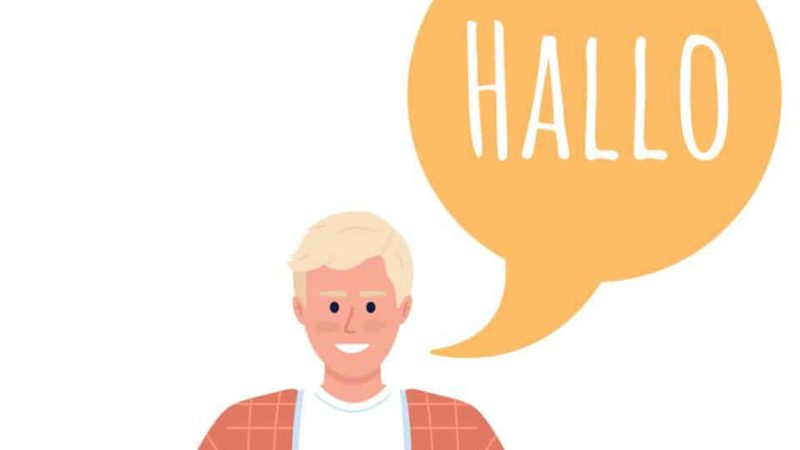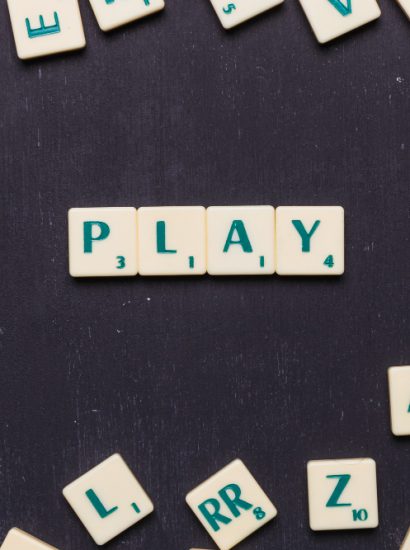The Dutch culture is rich, vibrant, and welcoming, and mastering basic greetings is a great way to immerse yourself in it. Whether you’re visiting the Netherlands for a short trip, studying abroad, or even planning to live there, knowing how to say “Hi in Dutch” can help you break the ice and build connections. In this guide, we’ll explore 10 brilliant ways to greet people in Dutch, making your conversations more lively and engaging.
Hi in Dutch: The Universal “Hallo”
The easiest and most common way to say “hi” in Dutch is by simply using “Hallo.” This word is virtually identical to the English “hello,” making it a quick and simple way to greet someone. It can be used in both formal and informal settings, which makes it versatile and easy to remember. Whether you’re walking into a shop, meeting a friend, or saying hi to a stranger on the street, “Hallo” is your go-to greeting in the Netherlands.
Hi in Dutch: The Casual “Hoi”
If you’re looking for a more relaxed and friendly greeting, “Hoi” is the word to use. “Hoi” is informal, similar to saying “hi” in English, and it’s commonly used among friends or in casual settings. It’s great for when you’re meeting someone for coffee or catching up with acquaintances. “Hoi” is perfect for everyday encounters and creates a friendly tone in any conversation.
Hi in Dutch: The Cheerful “Hee”
For a short, snappy greeting, “Hee” is the perfect choice. It’s similar to the English “Hey” and is usually used in very casual situations. You might use “Hee” when bumping into a friend on the street or starting a conversation with someone you know well. It’s warm, quick, and inviting, making it a great greeting for informal encounters.
Hi in Dutch: The Morning Greeting “Goedemorgen”
If you’re out early in the morning, you’ll want to greet others with “Goedemorgen,” which means “Good morning” in Dutch. This phrase is more formal than “Hallo” or “Hoi,” but it’s polite and common to use in both professional and casual environments. Using “Goedemorgen” shows respect and friendliness, and it’s a great way to start the day off on the right foot in the Netherlands.
Hi in Dutch: The Afternoon Greeting “Goedemiddag”
Just like “Goedemorgen” for mornings, “Goedemiddag” is used to greet people in the afternoon. Meaning “Good afternoon,” this greeting is typically used after 12 PM and before the evening. It’s often heard in workplaces, restaurants, or even in social settings during the day. If you’re meeting someone after lunch, “Goedemiddag” will set the right tone for a friendly yet respectful conversation.
Hi in Dutch: The Evening Greeting “Goedenavond”
For evening interactions, you’ll want to use “Goedenavond,” which translates to “Good evening.” This is a formal greeting commonly used after 6 PM. Whether you’re heading into a dinner party, greeting hotel staff, or simply wishing someone well during the evening hours, “Goedenavond” is a polite and proper greeting that reflects courtesy.
Hi in Dutch: The Friendly “Dag”
“Dag” is another versatile greeting in Dutch, similar to saying “hi” or “bye” in English. It’s used throughout the day in both formal and informal contexts. Interestingly, “Dag” can also mean “goodbye,” so it’s often used as both a greeting and a farewell. If you’re unsure about whether you’re coming or going, “Dag” is a safe choice.
Hi in Dutch: The Modern “Hey”
Dutch speakers, especially younger generations, have adopted “Hey” from English, and it’s widely used across the country. Pronounced similarly to its English counterpart, “Hey” is casual, friendly, and modern. You’ll hear it in cafes, among friends, and even in digital conversations. It’s an easy way to greet someone informally while blending in with the local lingo.
Hi in Dutch: The Familiar “Hallo Daar”
If you want to sound a bit more familiar and warm, try greeting someone with “Hallo daar,” which means “Hello there.” This greeting adds a little more friendliness and warmth compared to just saying “Hallo.” It’s a great way to grab someone’s attention or say hi to someone you haven’t seen in a while. It’s informal and often used when there’s already some familiarity between you and the person you’re greeting.
Hi in Dutch: The Joyful “Goeiedag”
“Goeiedag” is a casual way of saying “Good day” and can be used throughout the day. This greeting is a bit more informal than “Goedemorgen” or “Goedemiddag,” but it’s still a polite way to greet people. “Goeiedag” can also be used as a farewell, much like “Dag,” so it’s a flexible greeting to have in your vocabulary.
Conclusion
Learning how to say Hi in Dutch is not just about knowing the right words—it’s about understanding the culture and creating meaningful connections. By mastering these 10 ways to greet people, you’ll be able to start conversations confidently and make a great impression, whether you’re meeting someone for the first time or reconnecting with friends. From the casual ‘Hoi’ to the formal ‘Goedenavond,’ each greeting reflects different levels of respect and warmth, allowing you to navigate social situations with ease in the Netherlands.
FAQs
Q1. How do you say “hi” in Dutch?
The most common way to say “hi” in Dutch is “Hallo.” It’s a versatile greeting used in both formal and informal settings.
Q2. Is it okay to use “Hoi” in formal settings?
“Hoi” is typically an informal greeting, so it’s best to use it with friends or in casual settings. In formal situations, “Hallo” or “Goedemorgen” would be more appropriate.
Q3. What greeting should I use in the morning in the Netherlands?
In the morning, “Goedemorgen” (Good morning) is the most common and polite greeting.
Q4. Can I use “Dag” to say both “hi” and “goodbye”?
Yes, “Dag” is a flexible word in Dutch that can be used to greet someone or say farewell.
Q5. Is “Hey” commonly used in Dutch?
Yes, “Hey” has been adopted from English and is frequently used, especially among younger Dutch speakers in informal settings.
Also read: Things to Do in Eindhoven: 10 Must-See Attractions for First-Time Visitors









